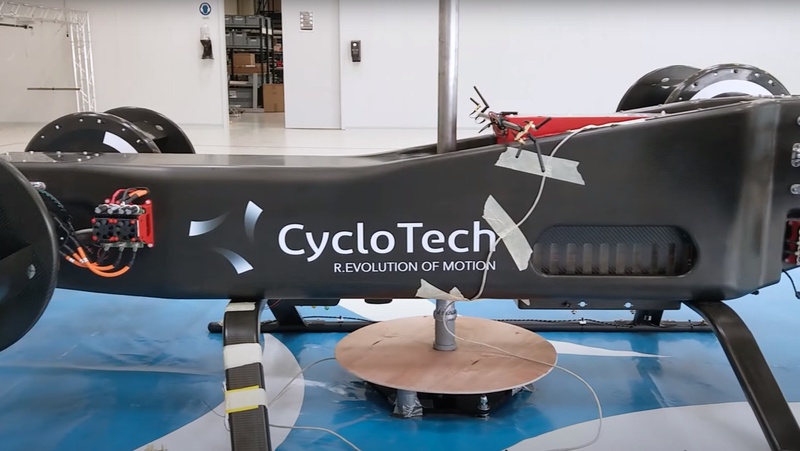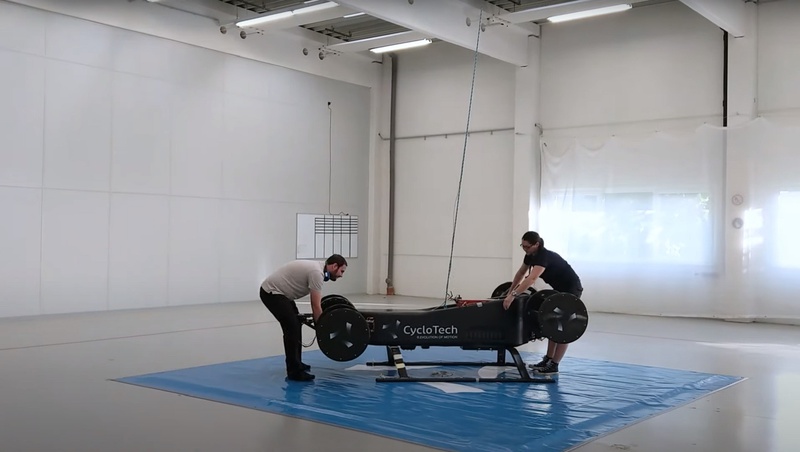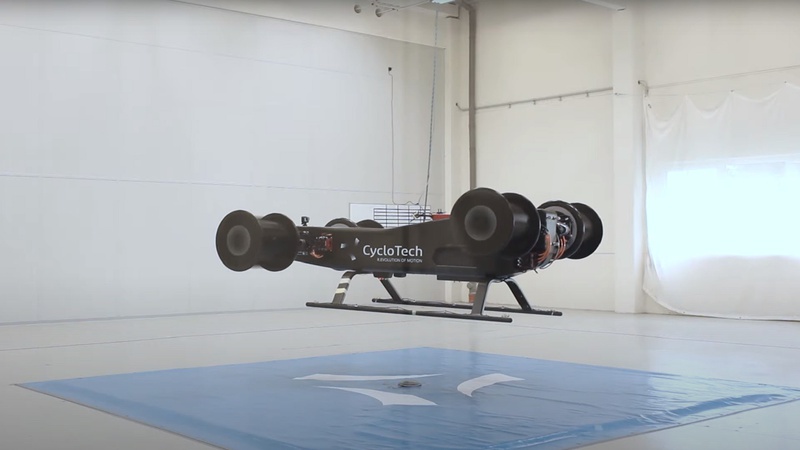CycloTech, an Austrian manufacturer, has received approval from Austro Control, the national aviation safety authority, to conduct flight tests of its CycloRotor, an electric vertical take-off and landing (eVTOL) aircraft. The aircraft uses Cyclogyro technology, which is a 360-degree thrust vectoring system that enables it to move forward, backward, up, and down, while traditional VTOLs are limited to just one direction. This system allows for a wider range of motion, better control, and improved maneuverability, making the aircraft better equipped to withstand unfavorable weather conditions.
The approval was granted based on regulations set by the European Union Aviation Safety Agency (EASA), and will allow the manufacturer to fly its 85 kg (187 lbs) demonstrator in a controlled test area of 2,500 square meters (27,000 square feet) in VLOS (Visual Line of Sight). The aircraft will be tested at a conventional airport in Upper Austria, with the flight campaign kicking off in March.



The CycloRotor completed its first flight test indoors over a year ago, and this milestone brings it one step closer to commercial operations. The manufacturer says it has been working on this technology for a decade, and it was inspired by a similar concept used in the maritime industry, the Voith-Schneider-Propeller.
The future aircraft would be fitted with four CycloRotors, which are the basic propulsion units that enable it to change the direction of thrust. It would also be remarkably lightweight, thanks to composite materials and the latest manufacturing technologies. The manufacturer aims to obtain an unmanned VTOL that can bring the benefits of this technology to urban air mobility, regional aviation, and cargo transportation.
This approval marks a significant achievement for both the future aircraft and the Cyclogyro technology itself. As no futuristic air taxi has started commercial services yet, manufacturers are designing and testing a variety of concepts in the AAM (Advanced Air Mobility) sector. The CycloRotor, however, sets itself apart from traditional VTOLs and has the potential to bring a new level of technology to the industry.
Source: Autoevolution

